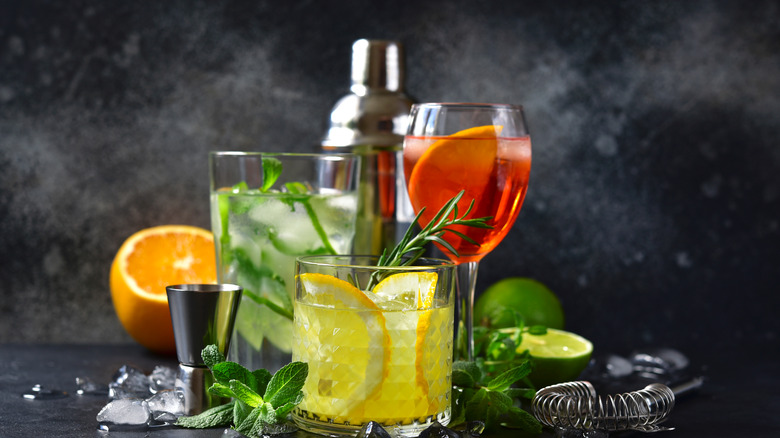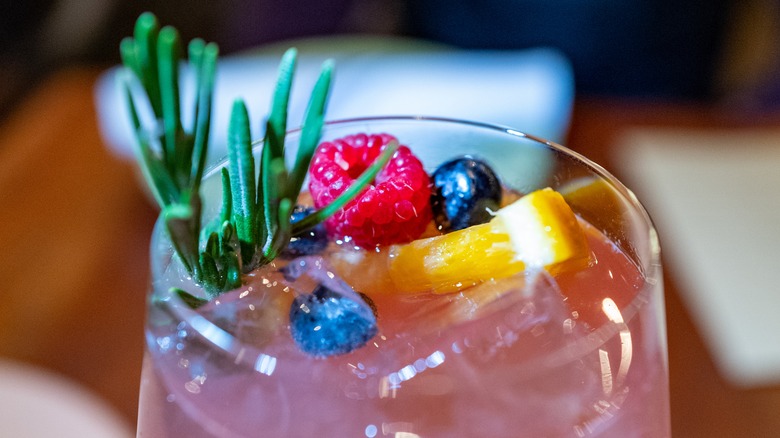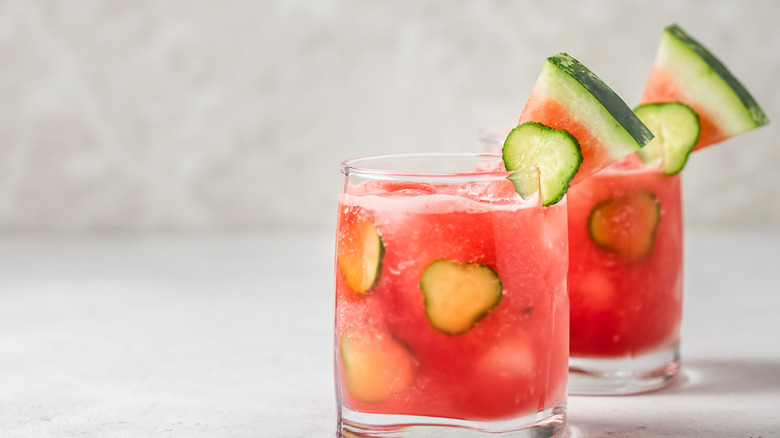The Californian Origins Of The Iconic Wine Cooler
Wine coolers are one of those drinks you might make fun of, but that you secretly enjoy — no matter how much you publicly protest to the contrary. A mix of wine, fruit juice, carbonated water, and sugar? Come on, man. Everyone who drinks is here for that.
But the up-and-down history of wine coolers is more complicated than you might realize. What started as a Southern California beach drink became a multi-million dollar industry, then all but ceased to exist, then came back again, now even enjoying an international following (unsurprising, considering Europe's general love of wine).
Michael Crete, the creator of the California Cooler (the original wine cooler), was originally just making a fun drink for his friends — white wine, pineapple or grapefruit juice, club soda — while they hung out near the water's edge. But he wound up making something that significantly shifted the alcohol industry and paved the way for pretty much all pre-mixed alcoholic beverages you can now find in stores.
Crete came out of nowhere with wine coolers to create a huge industry
Wine as a mixer isn't anything new; sangria has been around for multiple millennia, as have other wine-based mixed drinks. The difference with wine coolers was convenience: a ready-made bottled mixed wine drink you didn't have to go through a whole process to create. A lot more of these drinks exist on store shelves now. But when wine coolers were introduced, they were a revelation serving an underserved market.
Michael Crete may have created the drink for his friends, but people loved them so much he realized he might have something greater on his hands. He was already working in the beer and wine industry, so in 1981, he decided to strike out on his own with his high school friend Stuart Bewley, the business guy to Crete's salesman. The duo did everything themselves at first — brewing, bottling, sales, even delivery — but it didn't take long for their product to really take off. Just three years later in 1984, they were selling 10 million cases of California Cooler a year.
Other companies, including Seagram's and Bartles & Jaymes, soon got in on the game, and it seemed like wine coolers were here to stay.
Wine coolers eventually fell from grace, but they didn't stay down
The good times didn't last forever. Wine coolers' popularity began to wane in the late 1980s, the result of a shift in perception towards them being "starter" drinks for people with decidedly pedestrian tastes. A 1991 increase on alcohol excise taxes further bit into their profitability, leading to companies abandoning coolers for mixed malt beverages like Zima and (eventually) Mike's Hard. Michael Crete and Stuart Bewley didn't suffer the downfall, though: they'd cashed in to the tune of a $200 million buyout in 1985, making back almost 1500 times their initial $140,000 investment.
More recently, wine coolers are enjoying something of a resurgence. Restaurants are increasingly adding something akin to bespoke wine coolers to their menus, using high quality ingredients and clever marketing to get over the drinks' cheap perception. Bartles & Jaymes is even back in the game, too.
Whatever their popularity, it's important to remember that wine coolers started as something one guy brewed up to make his friends happy.


